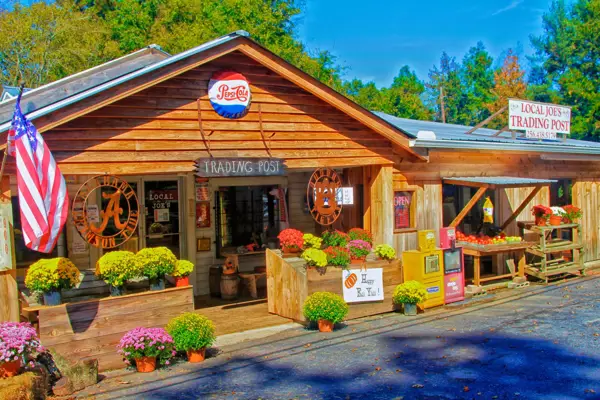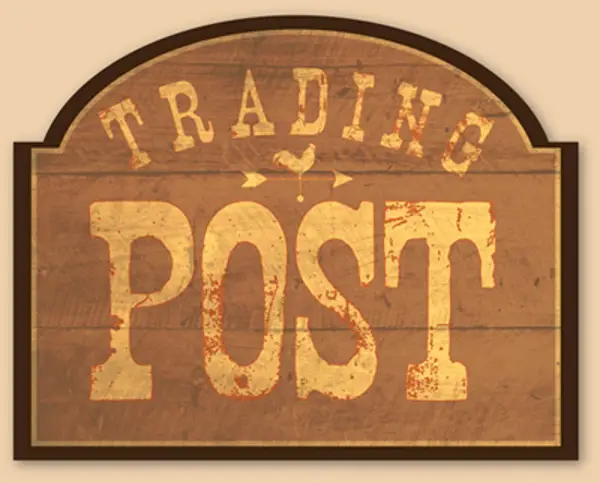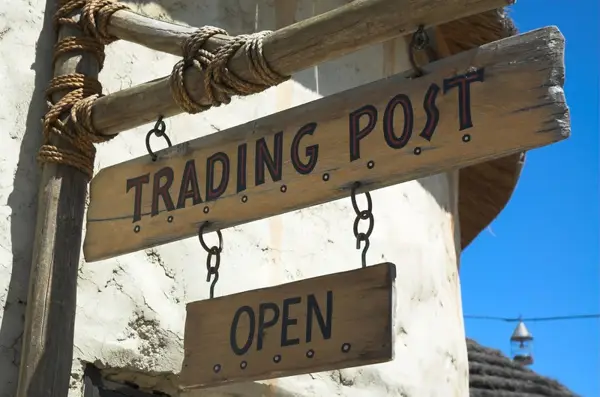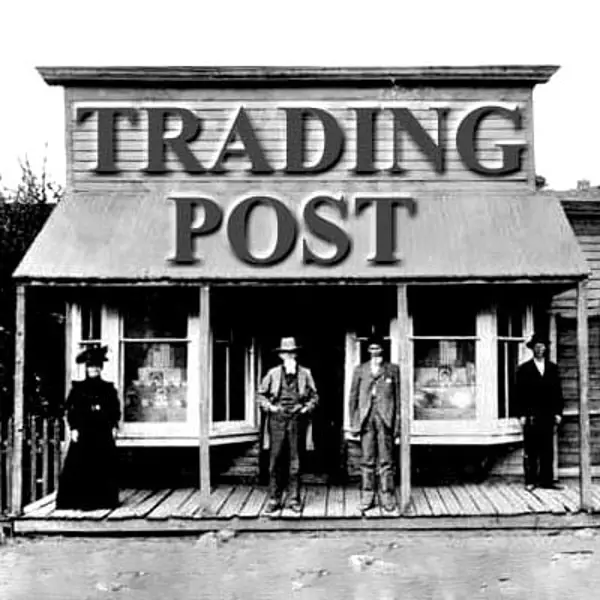Table of Contents
- Introduction
- Historical Significance
- The Purpose of Trading Posts
- Facilitating Trade
- Interactions and Intercultural Exchange
- Legacy of Trading Posts
- Modern Interpretations
Introduction
A trading post is a historical establishment that played a vital role in global trade for centuries. Serving as intermediaries, these vibrant hubs of commerce brought together traders, merchants, and indigenous people from various cultures, facilitating the exchange of goods, knowledge, and ideas.
Historical Significance
The trading post concept traces back to ancient times when civilizations sought to connect and expand their influence. From the ancient Silk Road to the New World, trading posts flourished, serving as important nodes of economic activity, diplomatic encounters, and cultural exchange.
A trading post is a historical site that holds great importance in understanding the economic and cultural developments of the past. These posts played a crucial role in facilitating trade and cultural exchange between different regions.
Facilitating Trade
Trading posts served as crucial meeting points for merchants, traders, and indigenous communities. They provided a platform for the exchange of goods, ideas, and cultural practices. By offering a central location for trade, they fostered economic growth and contributed to the development of interconnected commercial networks.
Cultural Exchange
Trading posts acted as cultural melting pots where people from diverse backgrounds interacted and exchanged their respective traditions and knowledge. This cultural exchange influenced art, music, language, and even social norms. It helped in shaping the multicultural societies we see today.
Exploration and Colonization
Trading posts often served as initial bases for explorers and colonizers, providing them with necessary supplies and acting as strategic outposts. These posts acted as hubs for further exploration, allowing traders and colonizers to expand their territories, discover new resources, and establish settlements in distant lands.
Preserving History
Trading posts, many of which have been preserved as historical landmarks, are valuable in preserving the history and heritage of past trade routes. They provide a tangible link to the past, reminding us of the journeys, challenges, and successes of those who shaped the world through their trade and interactions.
Trading posts have played a significant role in human history, fostering trade, cultural exchange, exploration, and colonization. They continue to remind us of our interconnected past and provide insight into the economic and cultural developments that have shaped the world we live in today.

The Purpose of Trading Posts
Trading posts primarily functioned as centers for commerce, providing a space for traders to exchange goods, negotiate prices, and forge business partnerships. Additionally, they acted as diplomatic hubs where various cultures and nations could engage in negotiations, establish alliances, and develop peaceful relationships.
Facilitating Trade
Trading posts streamlined the process of trade by offering a centralized location for the exchange of commodities, reducing travel distances, and minimizing language barriers through the use of interpreters. These establishments played a crucial role in the development of global trade networks and helped shape the modern world economy.
A trading post is a physical location or a virtual platform where goods, services, and resources are exchanged or traded between individuals or businesses. It acts as a hub for facilitating trade activities and has played a significant role throughout history in promoting economic development, cultural exchange, and regional growth.
Trading posts are often strategically positioned in areas where trade routes intersect, such as near waterways, ports, or along important travel paths. These locations allow traders to gather and exchange goods from different regions, encouraging diversity and access to a wide range of products.
Historically, trading posts were commonly found during colonial periods and the exploration of new territories. European powers, such as the Dutch, French, and British, established trading posts in various parts of the world to gain access to valuable resources and establish economic dominance. These posts became crucial points for merchants, indigenous people, and settlers to conduct commerce and exchange commodities.
In modern times, trading posts have evolved into various forms, including online marketplaces, where buyers and sellers can connect globally. Online trading posts like eBay, Amazon, and Alibaba have revolutionized trade by breaking down geographical barriers and enabling businesses and individuals to conduct transactions efficiently.
The advantages of trading posts include:
- Promoting economic growth and development
- Enhancing cultural exchange and cross-cultural understanding
- Providing opportunities for small businesses and entrepreneurs to access larger markets
- Encouraging competition and price transparency
- Facilitating the exchange of unique and diverse products
In conclusion, trading posts have been vital in facilitating trade throughout history and continue to play a significant role in the modern world. Whether physical or virtual, these platforms bring together buyers and sellers, enabling commerce, economic growth, and fostering global connections.

Interactions and Intercultural Exchange
One of the most captivating aspects of trading posts was the diverse mix of people and cultures they brought together. These interactions led to the exchange of ideas, technology, and cultural practices, contributing to the enrichment and evolution of societies involved. Language, cuisine, and artistic influences are just a few examples of the enduring legacy left by trading posts.
A trading post serves as a hub for interactions and intercultural exchange, where individuals from diverse backgrounds come together to trade goods, ideas, and experiences.
Trade
In a trading post, people engage in the exchange of goods, enabling them to access products that are not locally available. Trade fosters economic growth and development as communities become interconnected through the transfer of resources. It promotes collaboration and mutual benefit among individuals from different cultural backgrounds.
Communication
Interactions in a trading post often involve overcoming language barriers. Traders develop creative ways to communicate, using gestures, basic vocabulary, and simple phrases to convey their messages. Through such interactions, they learn about different languages, dialects, and communication styles, broadening their understanding of the world.
Cultural Exchange
A trading post provides a platform for intercultural exchange, allowing individuals to learn about different customs, traditions, and practices. Traders from various regions share stories, folklore, and traditional crafts, enabling cultural diffusion. This exchange enriches the lives of traders by exposing them to new perspectives and fostering a sense of global unity.
Learning and Adaptation
Being exposed to diverse cultures and practices, individuals in a trading post learn to adapt and accommodate different ways of living. They acquire new skills, knowledge, and techniques from other traders, improving their own practices. This continuous learning and adaptation lead to personal growth and the development of more inclusive and tolerant societies.
Building Relationships
In a trading post, individuals establish relationships based on trust and mutual respect. As traders regularly interact with one another, friendships and alliances are formed, transcending cultural boundaries. These relationships not only strengthen trade networks but also promote peace, understanding, and cooperation among communities.
In conclusion, a trading post serves as a melting pot of cultures, fostering interactions, intercultural exchange, and mutual understanding. It promotes trade, communication, and learning, creating a dynamic environment where people from diverse backgrounds come together to shape a more interconnected world.

Legacy of Trading Posts
While the era of traditional trading posts may have declined with changing trade routes and geopolitical shifts, their legacy persists in modern society. The principles of fair trade, international cooperation, and cultural exchange can all trace their roots back to these historical institutions.
Modern Interpretations
Today, trading posts are often reimagined as tourist attractions or cultural centers, showcasing the history, heritage, and products of a region. By preserving their historical significance, modern interpretations of trading posts help educate and inspire future generations, promoting cross-cultural understanding and fostering economic growth.
A trading post traditionally refers to a physical location where goods or services are exchanged or traded. However, in the modern era, the concept of a trading post has evolved and expanded to encompass various online platforms and marketplaces.
In today's digital age, trading posts have transformed into virtual spaces that enable individuals and businesses from different parts of the world to engage in trade and commerce. These online platforms offer convenient ways to buy, sell, and trade products or services without the need for a physical store or shop.
Popular modern interpretations of trading posts include e-commerce websites such as Amazon, eBay, and Alibaba. These platforms have revolutionized the way we conduct business, making it easier than ever for individuals to become entrepreneurs and reach a global customer base.
Additionally, social media platforms like Facebook Marketplace and Instagram Shops have also become prominent trading posts, allowing users to showcase and sell their products or services directly to their followers and friends.
Furthermore, cryptocurrency exchanges such as Coinbase or Binance can also be considered modern trading posts, facilitating the buying and selling of various digital currencies.
In conclusion, trading posts in the modern context have transitioned from physical locations to online platforms that enable global trade and commerce. The advent of e-commerce websites, social media platforms, and cryptocurrency exchanges has reshaped the concept of trading posts, offering convenience, accessibility, and unprecedented opportunities for individuals and businesses to engage in economic activities.

Key Takeaways
- Trading posts played a vital role in global trade and cultural exchange.
- They served as centers of commerce and diplomacy, connecting cultures and facilitating economic growth.
- Trading posts had a lasting impact on the development of fair trade principles and international cooperation.
- The legacy of trading posts is preserved in modern interpretations and cultural centers.
Frequently Asked Questions
1. What were the most famous trading posts in history?
Some notable trading posts include Constantinople in the Byzantine Empire, Timbuktu in West Africa, and Macao in China.
2. How did trading posts influence local economies?
Trading posts stimulated economic growth by introducing new goods, encouraging specialization, and facilitating long-distance trade.
3. Did trading posts only exist during colonial times?
No, trading posts have existed since ancient times and continue to thrive in various forms today.
4. What were the challenges faced by trading posts?
Challenges included competition with other posts, environmental conditions, political instability, and clashes between cultures.
5. How did trading posts contribute to cultural exchange?
Trading posts served as melting pots of culture, allowing people from different backgrounds to interact and share knowledge, ideas, and traditions.


No comments:
Post a Comment